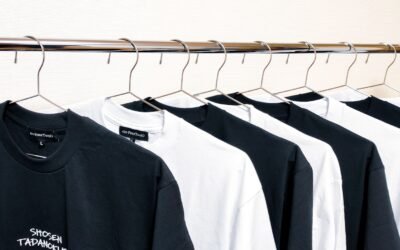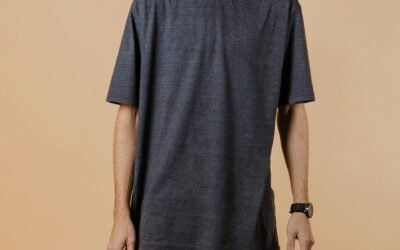Have you ever wondered why some sustainable t-shirts seem a bit see-through while others maintain a solid look? It can be puzzling when you pick up what seems like the perfect t-shirt, only to find out it’s more transparent than expected. This difference in transparency often comes down to the choice of fabrics and how they are crafted. Understanding these elements can help you make informed choices when selecting your next favorite eco-friendly tee.
Sustainable t-shirts are crafted with the environment in mind, often using materials and processes that differ from conventional clothing. As these t-shirts prioritize eco-friendliness over uniformity, they might not always fit the standard expectations for opacity. Let’s explore why these differences in transparency happen and how you can select the perfect t-shirt that aligns with your comfort and style preferences.
Understanding Fabric Choices
The type of fabric used in sustainable t-shirts significantly influences their transparency. Common sustainable materials include organic cotton, bamboo, hemp, and Tencel. These materials are chosen for their low environmental impact, but they all have unique traits that affect how a t-shirt looks and feels.
– Organic Cotton: Known for its softness and breathability, organic cotton is a popular choice. However, if woven finely, it can appear more sheer than traditional cotton shirts.
– Bamboo: This fabric offers a silky texture and is naturally moisture-wicking. Depending on how it’s woven, bamboo fabric can range from semi-transparent to more solid.
– Hemp: A sturdier option, hemp fabric usually provides a more opaque and durable shirt. It’s less likely to be see-through, even in lighter weaves.
– Tencel: Made from wood pulp, Tencel is smooth and drapes well on the body. Its transparency depends on the thickness of the fabric weave.
The weave and thickness of these fabrics significantly affect their transparency. A tighter weave typically results in a less transparent fabric, while looser weaves may allow more light to pass through. This is why two shirts from different materials can look distinct despite being labeled the same size and style. Understanding these differences ensures you pick a t-shirt that aligns with your personal style and coverage preferences.
Impact of Sustainable Production Methods
Sustainable production methods play a big role in how transparent a t-shirt might appear. These practices focus on reducing environmental harm and often involve using materials that haven’t been overly treated with chemicals or artificial processes. Such treatments, common in traditional clothing manufacturing, usually serve to thicken or reinforce materials.
Ethical manufacturing also prioritizes minimal processing, which can result in variations in the fiber’s texture and thickness. For example, a shirt produced with eco-friendly practices might look and feel different from one that has undergone extensive finishing treatments. A great example of this is the use of natural dyes instead of synthetic ones. Natural dyes might lead to a softer fabric texture, influencing the shirt’s overall opacity. While these differences might seem minor, they highlight the balance between sustainability and the final fabric characteristics.
Tips to Choose the Right T-Shirt
Finding the perfect sustainable t-shirt with the desired level of opacity involves a bit of homework. Here are a few tips to help you make an informed decision:
– Product Descriptions: Quite often, the fabric thickness and weave details are mentioned in product descriptions. Look for keywords like “heavyweight” or “lightweight” to gauge transparency.
– Customer Reviews: Reviews can provide valuable insights beyond what’s listed. They often cover details like how see-through a t-shirt might be.
– Visual Inspection: Take advantage of pictures and videos provided by sellers. Compare close-up images displaying the fabric weave.
– Material Contents: Identify the blend of materials if specified. Understanding what percentage of each material is used can help you predict opacity levels.
Caring for Your Sustainable T-Shirts
Maintaining your sustainable t-shirts starts with being mindful of how you wash and dry them. To preserve their quality and sustain desired opacity:
– Gentle Washing: Opt for cold water washes to uphold fabric strength. Choose a gentle cycle and avoid harsh detergents that might thin out fibers.
– Air Drying: Skip the dryer. Hang garments to air dry, which is gentler on the fabric and helps in retaining its original thickness.
– Follow Care Instructions: Always check labels for specific care instructions. Following them minimizes the risk of overstressing the fabric during cleaning, which can reduce opacity over time.
Caring for these garments is simple yet effective. Taking the right steps ensures your t-shirts stay comfortable and opaque for a long time.
Enjoy Your Eco-Friendly Wardrobe
Embracing sustainable t-shirts brings more than just a stylish addition to your wardrobe; it’s a proactive step towards supporting environmental conservation. By understanding fabric transparency, you can confidently build a collection of clothes that align with your aesthetic and comfort needs.
Choosing eco-friendly options not only supports a greener planet but also encourages thoughtful consumer habits. By being informed about what you’re buying, you’re more likely to enjoy long-lasting clothes that serve both your wardrobe and environmental goals.
If you’re inspired to refresh your wardrobe with thoughtful purchases, explore the comfort and style of sustainable t-shirts that support both your values and the planet. Find your favorites today with Save Mother Earth.









